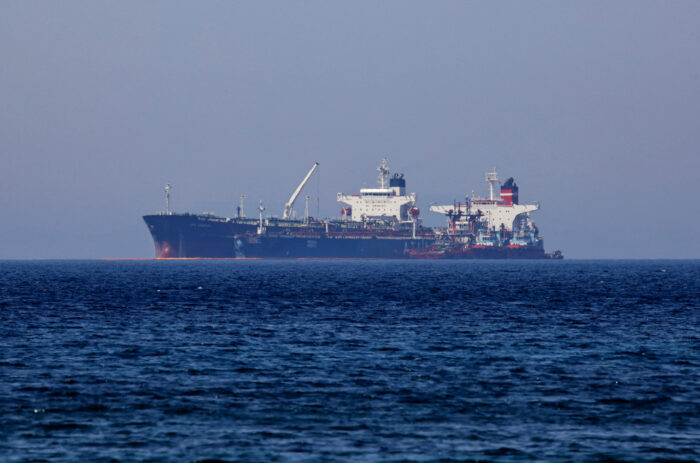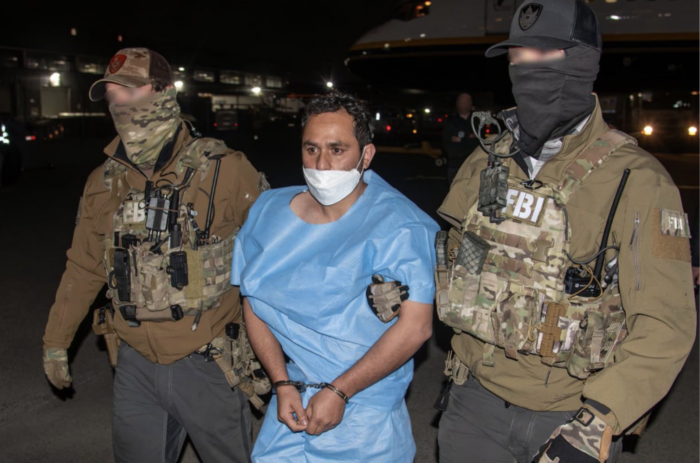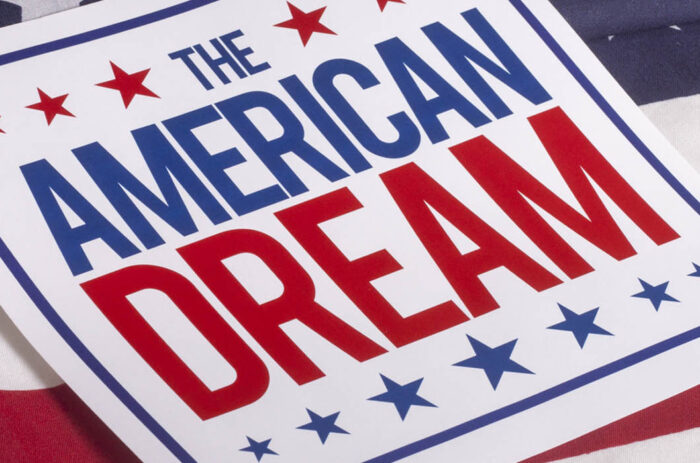redo Jump to...
print Print...
Note: This article is from the British newspaper The Daily Telegraph.
(from Telegraph.co.uk) – Five people have been killed in Thailand after troops opened fire on Red Shirt protesters barricading themselves in the centre of Bangkok.
At least 72 people have been wounded in fierce clashes that have turned central Bangkok into a virtual war zone.
Security forces moved to regain control of a road close to the Suan Lum Night Bazaar, a popular spot with tourists, after Red Shirt demonstrators spilled out of their fortified rally base, which was under siege by troops.
The protesters, who are trying to bring down the government of Prime Minister Abhisit Vejjajiva, threw stones, used slingshots and launched fireworks at the troops.
Three journalists, one of them a Canadian with the France 24 television channel, were shot in their legs and wounded while covering the violence.
Soldiers used tear gas and water cannons against the demonstrators, who set fire to piles of tires in the road, torched an empty police bus and vandalised army vehicles.
Volleys of gunfire rang out through the afternoon, sending people fleeing in panic.
At one point troops fired directly at protesters and then advanced up a road shooting into the air.
At least 33 people have been killed and about 1,000 injured in Bangkok in a series of confrontations and attacks since the protests began in mid-March.
The mood was tense inside the encampment, which has been fortified with razor wire, truck tires doused with kerosene and sharpened bamboo poles.
“Abhisit has already started civil war,” said Nattawut Saikuar, a senior Red Shirt.
“We urgently demand the government withdraw the military and stop all violence,” he said.
“I don’t know how we can survive tonight if Abhisit does not agree to a ceasefire. We hope that Abhisit does not want war.”
The Reds consider Abhisit’s government illegitimate because it came to power in a 2008 parliamentary vote after a court ruling ousted elected allies of their hero, former premier Thaksin Shinawatra, who was unseated in a 2006 coup.
Thaksin, who lives in self-imposed exile to avoid a jail term at home for corruption, called on the government to pull back troops and restart negotiations with the demonstrators.
“The government’s actions clearly constitute grave infringement of human rights and criminal offences for which the prime minister, the deputy prime minister and all concerned must be responsible,” Thaksin said in a statement.
Defense Minister General Prawit Wongsuwon said the military operation was meant to force the movement’s leaders back to talks with the government.
Around the protest area, which extends for several square kilometres, soldiers blocked roads and set up checkpoints to seal off the area. The city’s elevated Skytrain was suspended before nightfall.
Major General Khattiya Sawasdipol, a renegade general allied with the Red Shirts, was fighting for his life after being shot on Thursday evening close to the protest site.
His supporters said he was targeted by a sniper. The army denied any involvement in the incident.
He had a “low” chance of survival, said Chaiwan Charoenchokethavee, the hospital director.
The violence came after Abhisit shelved a plan to hold early elections in November after reconciliation efforts broke down.
The mostly poor and working class Reds initially agreed to enter the peace process but efforts to reach a deal that would see them go home eventually broke down.
Almost one-third of the country, including Bangkok, is now under emergency rule.
Information appearing on telegraph.co.uk is the copyright of Telegraph Media Group Limited and must not be reproduced in any medium without licence. Reprinted here for educational purposes only. May not be reproduced on other websites without permission from the Telegraph. Visit the website at telegraph.co.uk.
Questions
1. a) What is the capital of Thailand?
b) List the countries that border Thailand.
2. Read the “Background” below.
a) Who is the current prime minister of Thailand?
b) Which leader do the Red Shirts support?
c) Why did Thailand’s prime minister withdraw his offer to hold early elections?
3. How many people have been killed and wounded in Bangkok since the latest Red Shirt protests began in March 2010?
4. What demand have the Red Shirts just made of the government?
5. Why do the Red Shirts consider Prime Minister Abhisit’s government illegitimate?
6. Why does ousted Prime Minister Thaksin live outside of Thailand?
7. What was the military’s goal for attacking the blockaded protesters?
8. Approximately how much of Thailand is under emergency rule?
Background
THAILAND’S GOVERNMENT:
Thailand’s government is a constitutional monarchy with two legislative houses; its chief of state is the king, and the head of government is the prime minister. The king has little direct power under the constitution but is the anointed protector of Thai Buddhism and a symbol of national identity and unity.
- In January 2001, telecommunications multimillionaire Thaksin Shinawatra and his new …(TRT) party won a decisive plurality victory on a populist platform of economic growth and development.
- Thaksin’s premiership was marked by a confident foreign policy, implementation of his populist policies, and accusations of anti-democratic actions, including undermining independent bodies, limiting freedom of the press, and a 2003 war on drugs which led to 1,300 unsolved murders.
- In the February 2005 elections, Thaksin was re-elected by an even greater majority, sweeping 377 out of 500 parliamentary seats for Thailand’s first-ever single-party outright electoral victory.
- Soon after Prime Minister Thaksin’s second term began, allegations of corruption emerged against his government.
- Peaceful anti-government mass demonstrations grew, and hundreds of thousands marched in the streets to demand Thaksin’s resignation.
- Prime Minister Thaksin dissolved the parliament in February 2006 and declared snap elections in April.
- The main opposition parties boycotted the polls, and the judiciary subsequently annulled the elections.
- Before new elections could be held, on September 19, 2006 a group of top military officers overthrew the caretaker Thaksin administration in a non-violent coup d’etat, repealed the 1997 constitution, and abolished both houses of parliament.
- Soon thereafter, the coup leaders promulgated an interim constitution and appointed Surayud Chulanont as interim Prime Minister.
- In a national referendum on August 19, 2007, a majority of Thai voters approved a new constitution drafted by an assembly appointed by the coup leaders.
- The interim government held multi-party elections under provisions of the new constitution on December 23, 2007, which resulted in the pro-Thaksin People’s Power Party (PPP) winning a plurality of 233 of the 480 seats in the lower house of parliament.
- PPP leader Samak Sundaravej formed a coalition government and formally took office as Prime Minister on February 6, 2008.
- Samak was forced from office in September 2008 by a Constitutional Court ruling that he had violated the constitution’s conflict of interest provisions by hosting a televised cooking show.
- His successor, Somchai Wongsawat, PPP leader and brother-in-law of former Prime Minister Thaksin, also was forced from office by the Constitutional Court when it dissolved the PPP and two other coalition parties on December 2, 2008 for election law violations in the December 2007 elections.
- A split among ex-PPP members of parliament paved the way for parliament’s election of Democrat Party leader Abhisit Vejjajiva as Prime Minister on December 15, 2008.
- Efforts by the two PPP leaders to amend the 2007 constitution and provide amnesty to banned politicians, including ex-Prime Minister Thaksin, led to a renewal of street protests in mid-2008, some of which resulted in violence between security forces and protesters and between pro- and anti-government demonstrators.
- In 2008, anti-government [anti-Thaksin] “yellow-shirt” protesters occupied Government House from late August until early December; blockaded parliament in October; and occupied and forced the closure of Bangkok’s airports for several days in late November through early December.
- “Red- shirt” protests against the Abhisit government commenced in early 2009, leading to the disruption of a major Asian summit in Pattaya and riots in Bangkok in April.
- [In April 2010, the [Red Shirts] called fresh protests in Bangkok aimed at toppling the government.] (from bbc.co.uk)
- [They occupied Bangkok’s historic and commercial districts and at one point stormed parliament, forcing MPs to flee. They also stormed a satellite transmission base, in a bid to restart a television station which had been shut down by the government.] (from bbc.co.uk)
- [The protests turned violent on April 11, 2010, when at least four soldiers and 17 civilians were killed in clashes as the army tried to disperse the red-shirts.] (from bbc.co.uk)
- [Although current Prime Minister Abhisit Vejjajiva offered protesters an early election [which they at first accepted], he retracted that offer this week after the demonstrators refused to call off their two-month long rally [and instead made new demands of the government as a condition for leaving their protest site]]. (from wsj.com)
Resources
Go to worldatlas.com for a map of Thailand.
Read about the political protests in Thailand at news.bbc.co.uk/2/hi/asia-pacific/7584005.stm.
Watch a news report on the recent fighting in Thailand below:
Daily “Answers” emails are provided for Daily News Articles, Tuesday’s World Events and Friday’s News Quiz.



